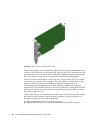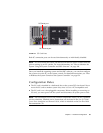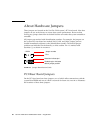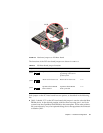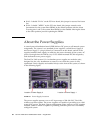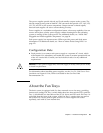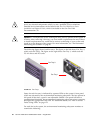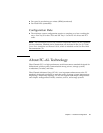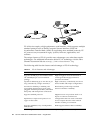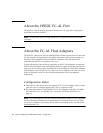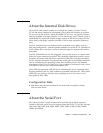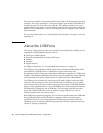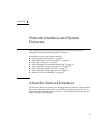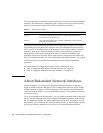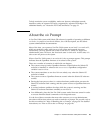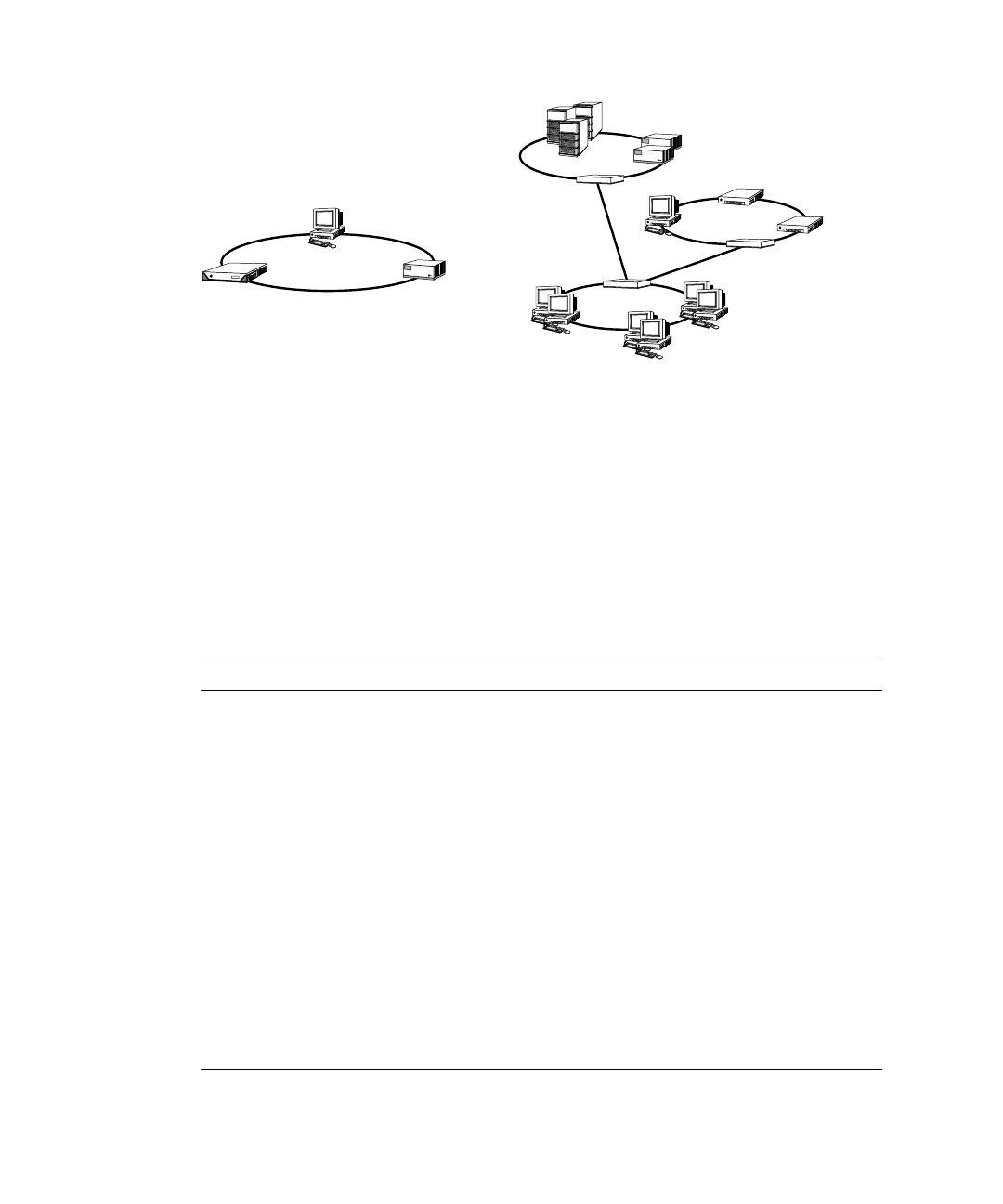
42 Sun Fire V490 Server Administration Guide • August 2004
FC-AL devices employ a high-performance serial interface, which supports multiple
standard protocols such as Small Computer Systems Interface (SCSI) and
Asynchronous Transfer Mode (ATM). By supporting these standard protocols, FC-
AL preserves any investment in legacy systems, firmware, applications, and
software.
The unique features of FC-AL provide many advantages over other data transfer
technologies. For additional information about FC-AL technology, visit the Fibre
Channel Association Web site at http://www.fibrechannel.org.
The following table lists the features and advantages of FC-AL technology.
TABLE 3-4 FC-AL Features and Advantages
FC-AL Features Advantag es
Supports 100-Mbyteper second datatransfer
rate (200 Mbytes per second with dual
porting).
High throughput meets the demands of
current generation high-performance
processors and disks.
Capable of addressing up to 127 devices per
loop (controlled by a single controller)
1
.
1 The 127 supported devices include the FC-AL controller required to support each arbitrated loop.
High connectivity controlled by one device
allows flexible and simpler configurations.
Provides for reliability, availability, and
serviceability (RAS) features such as hot-
pluggable and dual-ported disks, redundant
data paths, and multiple host connections.
RAS features provide improved fault
tolerance and data availability.
Supports standard protocols. Migration to FC-AL produces small or no
impact on software and firmware.
Implements a simple serial protocol over
copper or fiber cable.
Configurations that use serial connections
are less complex because of the reduced
number of cables per connection.
Supports redundant array of independent
disks (RAID).
RAID support enhances data availability.



